The oldest recorded bearded dragon was Sebastian who died at 18 years and 237 days old!
Diet, enclosure, sex, size, species and breeding can all impact the lifespan of a Bearded Dragon.
Bearded dragons in the wild tend to have a shorter lifespan than those kept as pets. This is due to factors such as food scarcity and predators.
If you want to learn more about a Bearded Dragon’s Lifespan, factors that can influence it and how to tell how old your bearded dragon is, then keep reading!
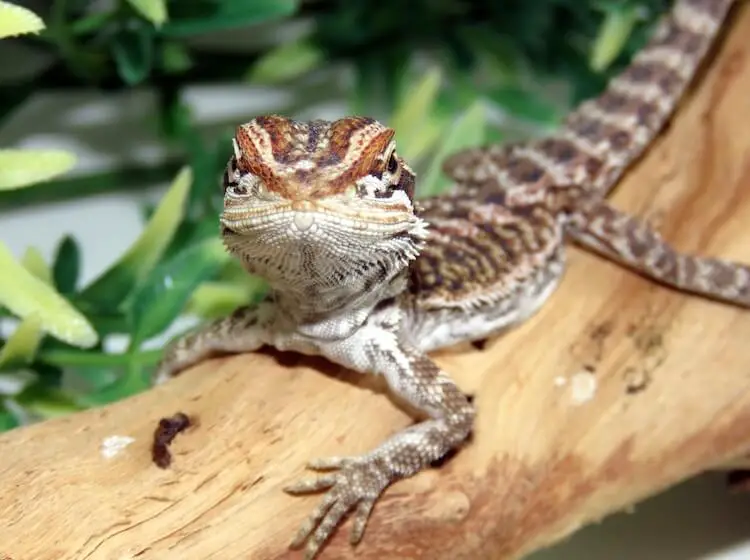
How Long Do Bearded Dragons Live?
Bearded dragons live anywhere from five to fourteen years old. As pets they generally live for around ten years. Males usually live longer than females as they are bigger. Bigger individuals are more durable and can withstand harsher environmental conditions. Also when a female has eggs it takes a large toll on her body. This energy expenditure reduces her lifespan.
Average Lifespan Of A Bearded Dragon In The Wild
Five to eight years is the typical lifespan of bearded dragons in the wild.
Natural predators are one of the main reasons why wild species have a shorter lifespan.
Hawks and buzzards are common birds that prey on bearded dragons. They are also hunted by wolves and big cats. When attacked bearded dragons can be left seriously wounded or killed which severely shortens the population’s average lifespan.
Beardies in the wild may also struggle to find food and will go through droughts. Food scarcity and droughts make survival more difficult.
To stay hydrated bearded dragons need to keep anywhere from 20 to 30 mL of water per kilo each day. Sometimes their dry desert like climate makes this difficult.
When combined predation, food scarcity and droughts reduce their potential lifespan by three to six years.
How Long Do Bearded Dragons Live In Captivity
A well-kept pet Bearded Dragon lives for eight to twelve years. Bearded Dragons in captivity do not face the risk of predation. They should also not face problems such as a lack of food or water. These factors combined with them eating a nutritious diet increases their lifespan.
Beardies kept in captivity have the potential to live much longer than their wild siblings. But, pets that are not properly cared for will match the lifespan of wild species.
Proper lighting, heating, humidity, space, nutrition and supplements are all important for a bearded dragon to thrive.
Spending a few extra minutes each day on husbandry will keep your lizard healthy and happy. It will also add years to their life.
How Long Can Bearded Dragons Live?
The maximum lifespan of a bearded dragon is twelve to eighteen years.
There have been a few cases of beardies living past 14 years of age. However, even for bearded dragons in captivity this is rare. The science behind beardies living this long includes great genetics, consistent husbandry, optimal housing and a good diet.
It is not likely a bearded dragon will live to 14 years of age, but it can happen.
The world record is a Pogona vitticeps subspecies that lived for 18 years.
Factors That Impact A Bearded Dragon Lifespan
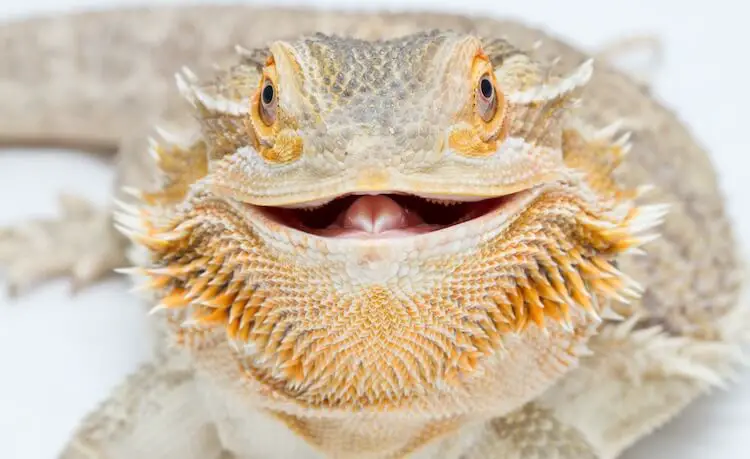
Husbandry and care are very important to increase the lifespan of a Bearded Dragon.
Unfortunately there are several mistakes owners can make which reduce their Beardie’s lifespan:
- Feeding adults too much protein and not enough plants.
- Not maintaining heat, light and humidity levels.
- Housing them in an enclosure that is too small.
- Not providing an area of shade in their enclosure.
- Forgetting to monitor their poop.
- Breeding a female too young.
Luckily these mistakes can easily be avoided.
We will now take you through each mistake and teach you how to avoid it.
Diet
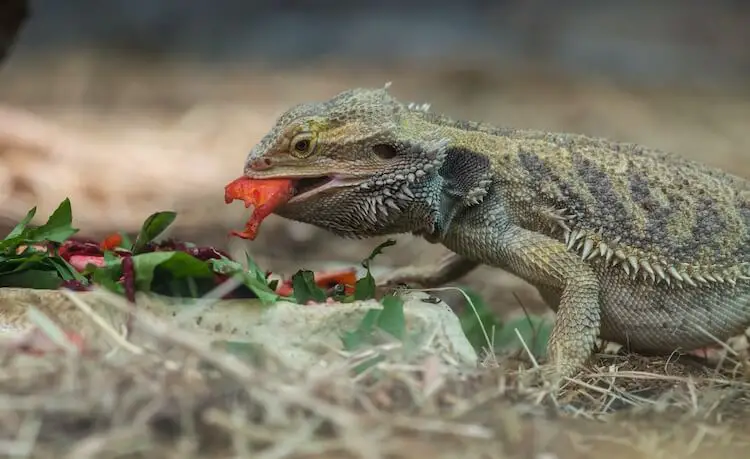
A well balanced diet will help your lizard to stay healthy and happy. It also increases your bearded dragon’s lifespan as feeding balanced and high quality nutrients helps them fight illness and disease.
The diet and nutrients you feed should be based upon their age.
- Hatchlings and juveniles need more protein in their diet so they should be fed more insects.
- Adults need a more plant and vegetable based diet as they are no longer growing.
It is important to monitor exactly what you are feeding and how long it has been since their last meal.
If calcium levels in their diet are not adjusted, excess levels can lead to bowel problems and organ damage. Yellow poop is indicative of too much calcium in their diet.
Hatchlings should have a calcium supplement added to their diet at least five times a week. Juveniles should have a supplement every other day and adults once a week.
Enclosure
Bearded Dragons need a 120-gallon tank with the proper levels of light, heat, humidity and substrate. If any of these key things are missing it will decrease their lifespan.
Let’s start with substrate.
Some substrates may be ingested by your pet lizard. This can lead to impaction which is a serious health issue. To minimize the risk of impaction only use non-particle substrates (e.g. reptile carpet).
Another mistake made by many owners is not providing a shaded area. The heat lamp should not cover the entire tank length. This can cause overheating. You should provide a Bearded Dragon with a thermal gradient and a cool side with shade. Overheating can result in death.
A quality UVB light should also be installed. Use a large UVB bulb and not a coil.
Finally, keeping the humidity between 30 to 40% will help to prevent respiratory infections. Respiratory infections are another way their lifespan can be reduced.
A key factor in ensuring your lizard gets as big as possible is making sure the enclosure is not too small. A small enclosure will increase their stress levels and have negative effects on their health.
Disease
One of the best ways to increase a Bearded Dragon’s lifespan is to monitor its health. Preventing disease and identifying the early warning signs are very important. Beardies should see a vet at least once a year.
Metabolic Bone Disease is one of the most common illnesses for this species. It is a non-infectious disease that affects the function of bones. As the disease progresses there will be deformations in the jaw, spine and front legs. Their front legs may splay horizontally.
Husbandry mistakes leading to this disease includes a lack of UVB light and a lack of calcium supplements.
Breeding
If you want a female to live the longest life possible then consider not breeding her.
Breeding decreases a female’s lifespan. It results in the enlargement of the abdomen and a loss of mass in the pelvis and limbs. These factors take a toll on her body and reduce her lifespan.
The energy expended during reproduction and laying eggs also has a large effect.
Females can lay multiple clutches of eggs ranging from 15 to 25 eggs per clutch. The more eggs the greater the toll on her body.
If you choose to breed your Beardie then make sure to help her recover. Feed and water her by hand for several days after she has laid her eggs.
Species
There are eight subspecies of bearded dragon. Larger subspecies are more resilient than smaller ones. Larger individuals in the wild are better at fending off predators and adapting to different environments. The bigger the Bearded Dragon the more resilient and stronger they are.
The most common pet species is the Pogona vitticeps subspecies. It has a lifespan of eight to twelve years.
Another pet subspecies is Pogona henrylawsoni. They are generally much smaller and have a lifespan of eight to ten years.
The Rankin’s dragon is another smaller subspecies. Their lifespan ranges from six to ten years.
Bearded Dragon Life Cycle
Bearded dragons have six life stages. All six stages are based upon their size and age.
1. The embryonic stage is a period of development that takes place within the egg. During this phase the mother’s diet and stress levels can impact their offspring’s quality of life.
2. Hatchlings are born at three inches in size. This stage of life lasts for between 55 to 75 days as they grow at a rate of 1-3 inches per month. A Bearded Dragon is considered a hatchling until they reach eight inches in length.
3. The Juvenile stage begins when a bearded dragon is about 7-8 inches in length. Also known as subadults they will grow at a rate of 1 inch per month.
4. Young adults are aged between one to three years old. During this stage they should start to consume more vegetables and greens (rather than insects). As they sexually mature bearded dragons start exhibiting more social behaviors. Growth will slow down during this phase.
5. Mature adults are between four and seven years old. There is no growth at this stage and a gradual decrease in reproduction rates.
6. The final stage is old age. It usually starts around 7-8 years of age. This life stage is characterized by increased lethargy and decreased feeding. Your bearded dragon’s old age can start later in life based on the care they receive. earlier in their life.
| Life Stage | Duration |
|---|---|
| Embryonic | 55 to 80 days to hatch. |
| Hatchling | From birth until eight inches in length. |
| Juvenile | Begins when they reach eight inches in length. |
| Young adult | 1-3 years old. |
| Mature Adult | 4-7 years old. |
| Old Age | 8 years and older. |
How Old Is My Bearded Dragon?
You can quickly identify how old a bearded dragon is based on their life stage. To do this there are a few easy methods. For younger individuals you can measure their length to find out how many months old they are:
- Hatchlings under 30 days old are usually under four inches in length.
- Individuals between four and ten inches are normally under four months old.
- Any species measuring twelve inches or less is younger than a year old.
Measuring body length is most effective for individuals less than one year of age.
Adults are usually between 16 to 24 inches. But, it is possible for both a juvenile and mature adult to measure 16 inches long. In this case you will need to weigh them. Juveniles will not be heavier than 300 grams. Adults can be 500 grams when fully grown.
Another way to determine the age of an individual is sexual maturity. When you can determine your beardie’s gender you know they are between 8 to 12 months of age. Sexual maturity lasts for the first three years of their life
As young adults it can be difficult to sex them.
Male adults have thicker tails, larger heads, a dark beard and enlarged pores.
Measuring length, weight and determining sex is the best way to guess the age of a bearded dragon. Remember all of these methods are approximations – they will not give you an exact age just an idea of their life stage.
Summary
Pet Bearded Dragons live for between eight and twelve years. Wild species have a shorter lifespan of five to eight years because of factors such as predation, food scarcity and droughts. Generally the bigger the individual the longer they will live for.
Any individual that lives for much more than 12 years is considered rare.
Diet, enclosure, sex, genetics, size, species and breeding can all affect a bearded dragon’s lifespan.
It is essential for any owner to avoid common husbandry mistakes when caring for a bearded dragon. This will help to keep them healthy, happy and can increase their lifespan.
Monitoring your Bearded Dragon for common signs of illness is crucial. Some of these signs include weight loss, dehydration, loss of appetite, mucous membrane changes, swelling, abnormal behavior and visible lumps.
Now that you know more about the part you play in increasing your pet’s lifespan, what will you do to make sure your beardie lives a long and healthy life? Let us know in the comments below.

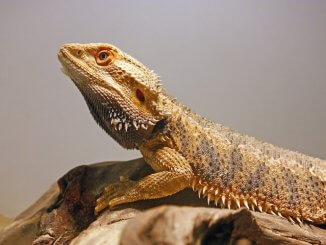
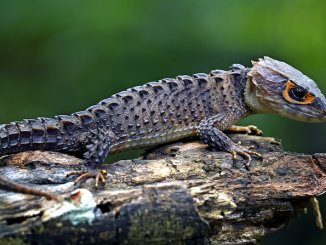
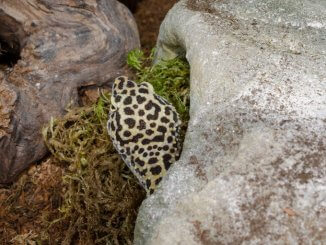

Hi guys,
Just wanted to let you know my bearded dragon is 20.
My daughter wanted one when she was 6, and she is now 26..and of course Mum has and still is looking after him 🙂
That’s awesome it’s lived that long means it’s being loved and cared for properly. Mine is going on about 3 years old I believe, His name is flash (cuz he’s so fast lol) and he is a very happy and full of life beardie, After reading this article it gives me great hope that he’ll be around for a long time to come and that he’s healthy and happy as I always hope he will be. Thank you for all the great info on them was very helpful in making sure I m doing everything right to maximize his lifespan and time with our family!!!
That’s a world record. Contact the Guinness Book
I’m glad to know I’m not alone – my Beardie is at least 21 years of age, having adopted him as an abandoned adult in the year 2000 in Michigan. I live in California now, and “George” enjoyed basking on the car’s dashboard in the sun as we drove across the Country. His favorite food: dandelion flowers.
Dandelion flowers! Thanks for the suggestion. Ours loves blue berries. His name is Bobby and he also likes basking on the dash of the car.
Our lizard is also about 20 and he is now not hunting his crickets. I have to hand feed him but he isnt even eating out of my hand anymore. I dont know what else to do…
You’ve got yourself a very senior lizard! So it is normal that his appetite is not the one it once was. If it otherwise behaves and look normal, this shouldn’t be a problem.
Nonetheless, check our diet suggestions, and perhaps try offering him food items he is not accustomed to.
I am New at this. I found an Abandoned Bearded Dragon, 19 inches long, she is so very Precious, I have an idea of who Truly just Threw this wonderful Pet out during 36 degree weather 2 weeks ago in Stuart Fl., she survived somehow and I found her Basking in an area close to it’s destroyed Terrarium which she being 19 inches was way to small for her. Now I am used to Boston Terriers, yet being Disabled & 63 yrs. Old, finding this wonderful Creature of God has been a blessing. I immediately Googled everything I could about her & have bought her what she needs for her age, measuring 19inches it is obvious that she being an Adult may not have many yrs. left. But only God knows Shoot I was supposed to die at 21yrs. of age and I’m still here doing HIS WILL FOR HIS GLORY. I was pleased to read that these precious Creatures can live longer as I have read All of your comments. I pray the Lord will bless this Blessing he’s bestowed upon me with many more years to live. And if I find the original owner, I’ll do my best to have Him locked up. The ASCPA told me that it is illegal to just Trash a Domestic Reptile. I’ve named her TENDER, if Any of you have any tips for me By all means send them to me.Yes, she’s seen a Vetrenarian and remarkably is doing very well. Sincerely & Respectfully, [email protected]
My adult daughters 5 year old beardie died today of no known cause.He was a Xmas present when she was stillnin high school. VERY spoiled, and extremely well kept. Yesterday running around active and happy as ever, this morning she went to take him out of his habitat to play and he was dead.
How devastating for our entire family.
Absolutely no idea what could have happened.
I know very well how devastating that can be… Especially so suddenly. This is quite rare, as you would normally see some signs that a disease or injury is maturing.
Sudden death might be caused by either temperature (might have dropped too much during the night), or impaction (he might have ingested sustsrate or too big a prey in the days coming up to the event). Other than this, I am not sure what else might have happened.